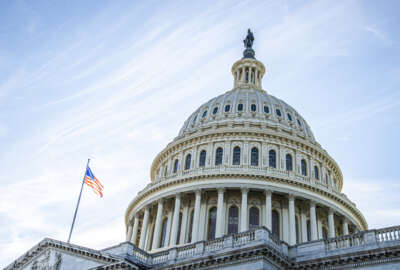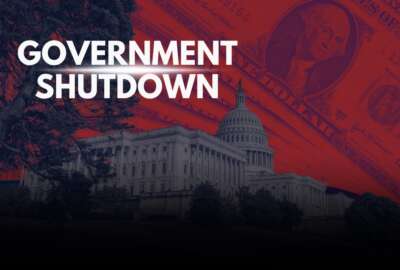AFGE sees ranks swell after turbulent year
After a turbulent 2013 that saw sequestration budget cuts and a two-week government shutdown, the largest federal-employee union is hoping to flex more political...
After a turbulent 2013 that saw sequestration budget cuts and a two-week government shutdown, the largest federal-employee union is hoping to flex more political muscle this year.
“As you all know, federal employees and retirees have been under constant attack, and the government services and programs that we administer have been on the chopping block also,” American Federation of Government Employees National President J. David Cox said in a conference call Thursday with reporters. “We have lost some of these battles, but we have also had our fair share of victories.”
Among them, a spike in the number of dues-paying AFGE members.
“Our membership has actually grown to a level that we have not seen in decades,” Cox said.
At the end of 2013, AFGE claimed 284,630 active members. Compare that to the 1990s, when AFGE membership topped out at about 160,000.
To what does Cox attribute the swell in new AFGE members?
“With this past year, a government lockout, sequestration, all the things that we have faced, people value AFGE and believe AFGE is the entity that’s out there fighting for them,” he said.
The growth in new members last year makes AFGE the fastest growing union in the AFL-CIO, Cox said.
Most recently, AFGE announced it had inked the first ever agencywide contract with the Defense Contract Audit Agency (DCAA) that will increase the number of DCAA employees the union covers by more than half.
The master agreement covers the agency’s entire 3,200-employee workforce in all five regions. Before the creation of the national bargaining council, AFGE represented about 1,300 employees in just two regions.
What will 2014 hold for feds?
2013 proved to a mixed bag for federal employees. Sequestration took a big bite out of agency budgets, causing furloughs and hiring freezes. Later, an impasse over the budget on Capitol Hill led the government to shut down for 16 days.
However, by the end of the year, lawmakers had cleared the way for the first pay raise — a slight 1 percent bump — in three years and the current federal employees were exempted from a new mandate to contribute more of their salaries to their pensions.
One of the early indicators of feds will fare this year will be the President’s fiscal 2015 budget due out next month.
In each of the last few years, President Barack Obama has proposed billions in deficit savings by requiring all federal workers to contribute more toward their retirement.
However, Rep. Chris Van Hollen (D-Md.), the top Democrat on the House Budget Committee, told reporters late last year Obama promised him he wouldn’t propose any retirement benefit cuts in the fiscal 2015 budget.
“Chris Van Hollen has always been a man of his word, and most of all, people better understand that AFGE and all of organized labor are going to be in the streets, and we are going to be fighting like hell that there be no cuts in retirement of federal employees,” Cox said.
Meanwhile, AFGE is kicking off its annual legislative conference next week at the Hyatt Regency Ballroom on Capitol Hill. At the event’s general session Monday, Sen. Tom Carper (D-Del.), the chairman of the Homeland Security and Governmental Affairs Committee, along with Reps. Tom Cole (R-Okla.) and Chris Van Hollen (D- Md.) are set to address members.
RELATED STORIES:
OMB: White House budget proposal coming March 4
How the budget deal will impact current and future feds
Government shutdown: 4 things feds should know
Copyright © 2024 Federal News Network. All rights reserved. This website is not intended for users located within the European Economic Area.





